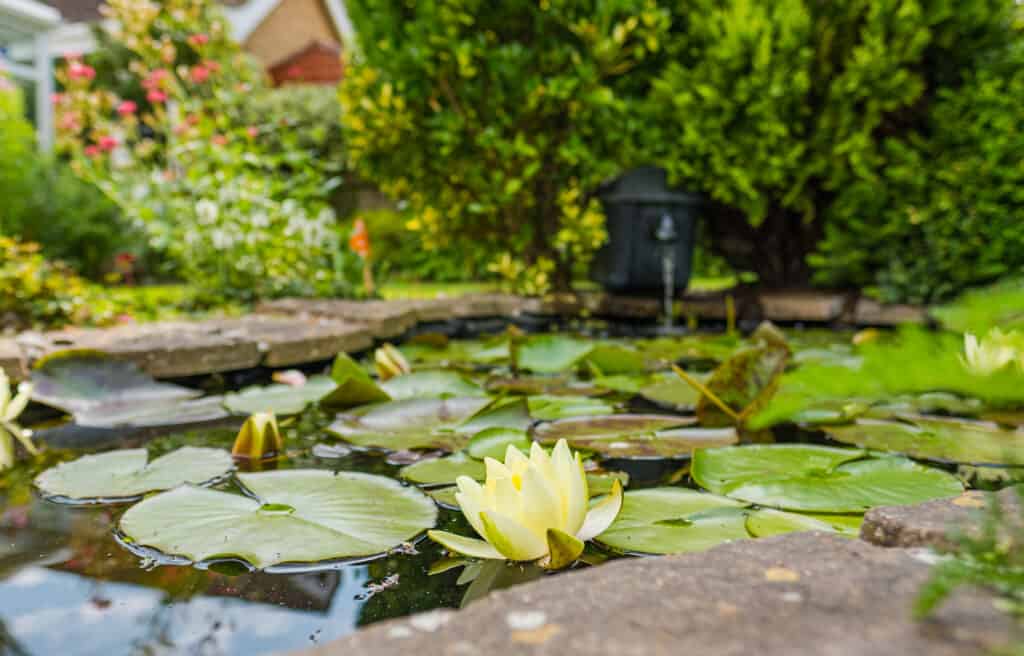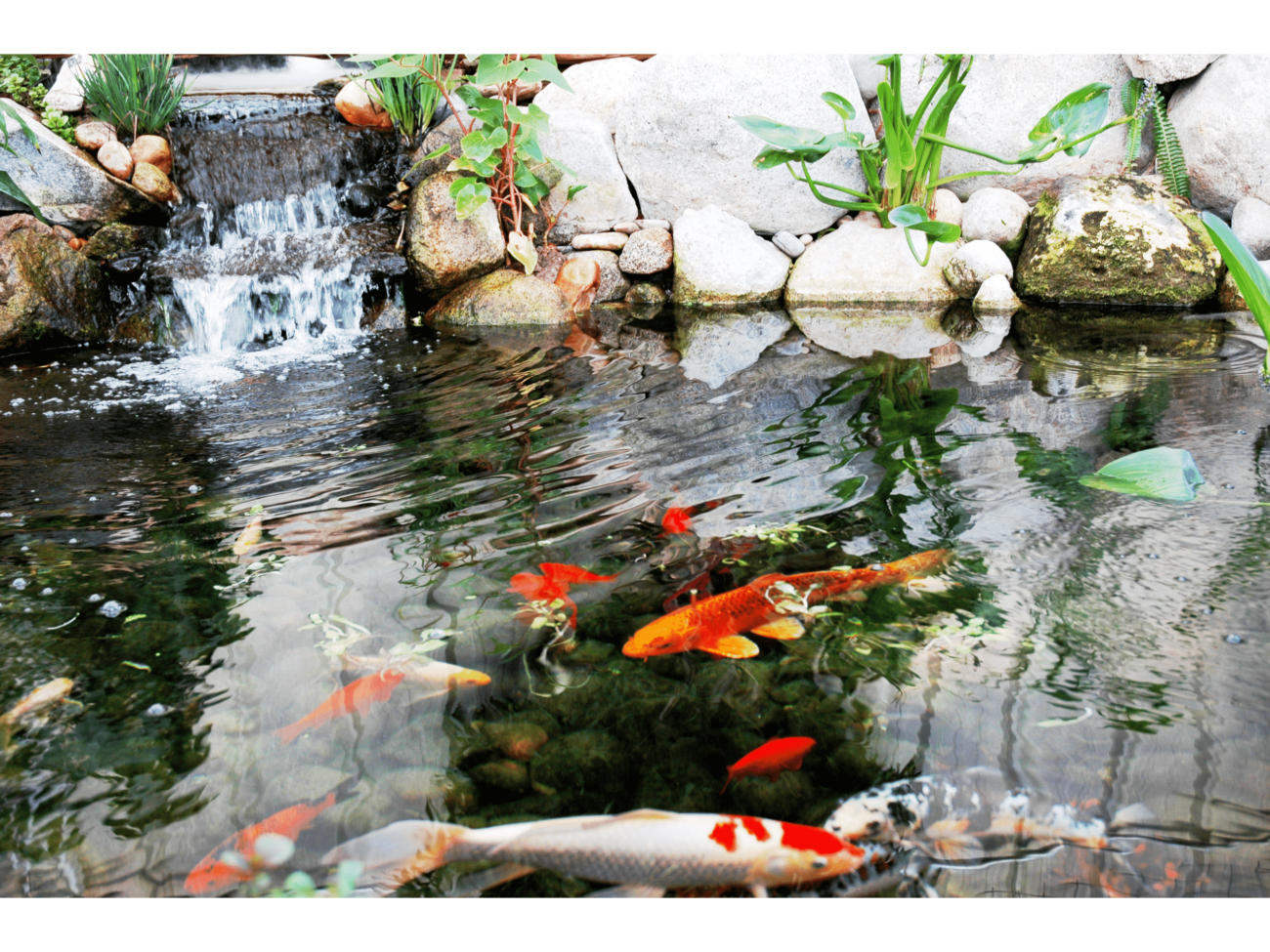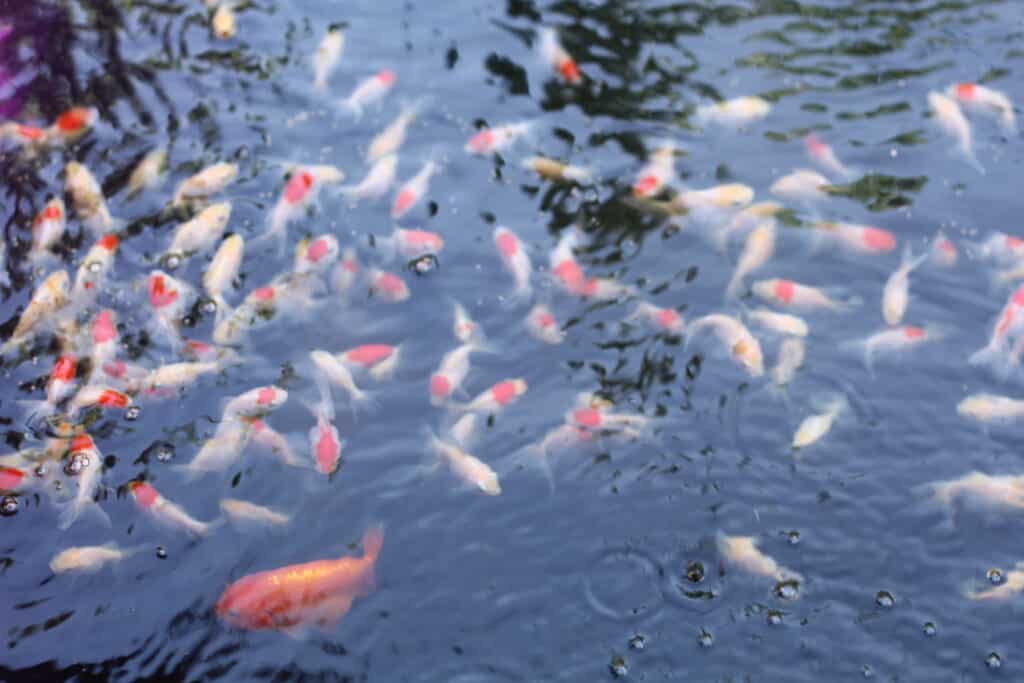
Pond pumps are a critical part of any koi pond, but what size pump do I need for my koi pond?
To determine how large a pump you need for your koi pond, you multiply the pond’s width, length, and depth, in feet, together, and multiply the answer by 7.5. This value, in gallons, will give you the volume of water to be pumped. The pump needs to circulate all the water once per hour.
Circulating water is an essential aspect of any pond ecosystem. The pump you install is vital to the healthy functioning of your koi pond. But what are some other determining factors of pump size? Why is a pump so important? And what happens if the pump is too small or large?
Pro Tip: If you’re tired of wasting money and making costly mistakes on the koi-keeping hobby or are thinking about buying koi fish but don’t know where to start, I strongly suggest you check out this ebook. I recently read this ebook, and it contains SO much useful information, such as:
- 3 proven steps to identify koi fish diseases
- WARNING: 3 things you should NEVER do when it comes to caring for koi
- When to seek professional help when it comes to looking after your koi
How Do I Choose A Pump Size?
The pump that you select needs to be strong enough to circulate the entire volume of pond water at least once in an hour, i.e., for a 1200-gallon pond, you would need a pump with a rating of at least 1200 gallons per hour (GPH). For a 250-gallon pond, you would need a pump with a rating of at least 250 gallons per hour (GPH).
Another two essential factors when selecting pumps are:
● Head height. Head height is how high the pump needs to push water vertically above the pond’s surface.
● Lift rating is related to head height. The lift is the distance water moves from the pump to the top of the feature before returning to the pond.
When purchasing a pump, make sure that the lift rating on the pump is higher than what is required.
These factors are more applicable if you have a fountain or waterfall feature attached to your koi pond and require the pump to be stronger than if they were not included.
Why Does The Size Of The Pond Pump Matter?
Selecting a pond pump of the correct size is vital as a pump that is too big or too small could have dire consequences, both for the koi fish and the pond.
Do I Need A Pump In My Koi Pond?
Koi pond pumps play a critical role in ensuring the longevity, health, and appearance of your koi and their pond by circulating the water. This circulation results in oxygenation of the water (so koi fish have enough oxygen to breathe), preventing the pond water from stagnating.
When a pond stagnates, it creates a breeding ground for algae (including blue-green algae, which is hazardous for fish) and mosquitoes, among other things.
Stagnant water also results in nutrients (from fish food, manure, and other organic materials) building up, further increasing algae blooms and other water weeds’ growth.
What If The Pond Pump Is Too Big Or Too Small?
When a pump is too small to move the pond water effectively, algae build-ups in certain pond areas. These “pockets” will eventually spread and deplete the oxygen levels within the pond.
A too-small pump will also not provide the pond with sufficient oxygen. In situations where your pond is fully stocked, it may result in fish dying sooner than they should due to oxygen starvation.
Conversely, when a pump is too large for a koi pond, it can also result in unwanted consequences, including:
● Water wastage. As the water leaves the pump and returns to the pond, there is a large amount of spillage (the fountain sprays too hard, or water comes out of the outlet too quickly and spills out of the pond).
● A non-conducive environment. Fish and plants can often be picky in the strength of the current they require. When the current is too strong, it may stress the organisms present. This stress often results in fish dying and plants being uprooted.
● Energy wasting. When your pump over-operates, it uses more electricity than it needs to. This wastage pushes the overall expenses of your koi pond up.
● Larger pumps also make more noise, which is unpleasant for you and your neighbors, and the noise and vibrations are not ideal for the koi fish either.
● Pumps that are too large may also damage other components like filters and pipes.
What Other Factors Influence The Size Of The Pond Pump Required?
Some other factors to keep in mind when selecting a pump of a particular size include:
The Overall Size Of The Pond


Outdoor koi fish require ponds of at least three feet deep. This depth is significant for areas that receive frost during wintertime. Although koi are hardy and hibernate during the winter, they cannot survive in a completely frozen pond.
Three feet of water will provide them with some movement room, but deeper areas would be ideal.
Deeper ponds require pumps with higher head height and lift ratings.
The amount of koi fish you want to keep determines how big your pond will be. It is recommended to keep koi in outside ponds with at least 50 gallons of water per fish. As you collect more fish, you’ll need a bigger pond. A bigger pond needs a bigger pump.
The Total Number Of Fish

Additionally, the more koi in a small area, the more oxygen they use up and the harder the pump needs to work.
What Type Of Pump Do I Need For A Koi Pond?
There are two types of pumps suitable for koi ponds.
- Submersible. These pumps go underwater, usually as deep as possible in either a protective box/vault or without one. Submersible pump sizes range from 50 to 5 000 GPH capacity. They are generally ideal for smaller sized pounds (up to 1 000 GPH)
2. Non-submersible. These pumps remain outside the pond, usually close by in a dry area. They excel at pumping water for larger ponds (ponds that require pumps greater than 1 000 GPH).
Whichever pump type you go with, make sure that it is rated for continuous usage, as intermittent or other types of pumps may break sooner from all of the use.
Conclusion
Keeping koi fish in outdoor ponds is an exceedingly popular pastime. To make sure that your koi fish are healthy, happy, and live to a ripe old age, make sure that their pond is suitably set up and equipped with the correct size pump to circulate the total water volume within an hour. This circulation is vital to keeping the pond oxygenated and the algae, mosquitoes, and nutrient build-ups to a minimum.
References
https://pondinformer.com/pond-pump-size-guide/
https://www.buildyouraquarium.com/koi-pond/
https://www.completekoi.com/blogs/news/what-pump-do-i-need-for-my-pond

